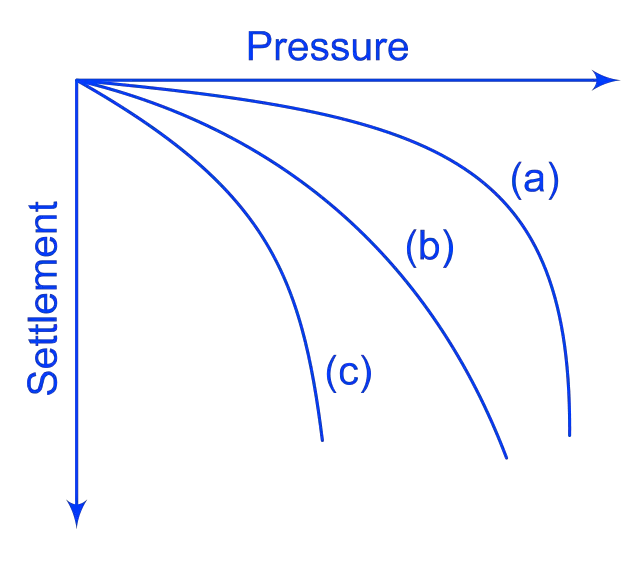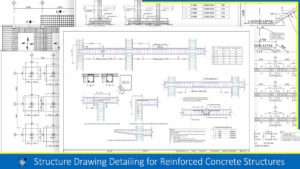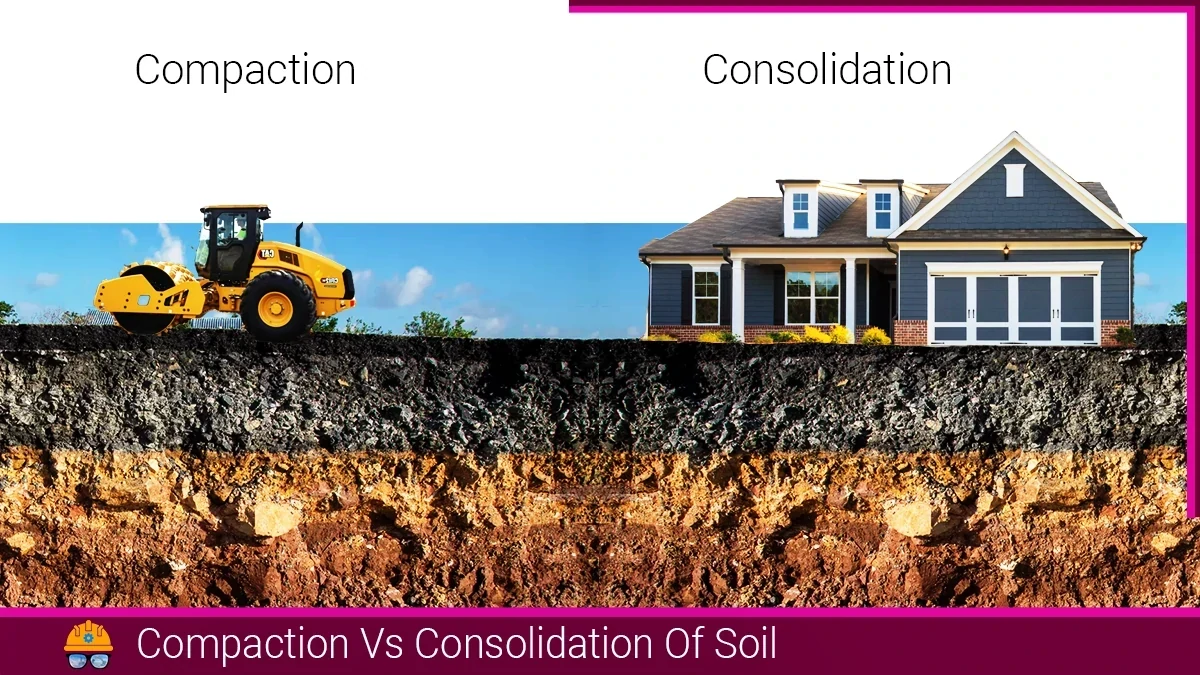The foundations are an important structural component of the buildings or other structures that contribute to the distribution of load from the superstructure and substructure to the larger area of surrounding subsoil. One of the reasons for foundation failure can be the consequence of bearing capacity failure. Here, in this article types of bearing capacity failure are being discussed.
Bearing Capacity Failures
Bearing capacity failure refers to the situation where a foundation or soil structure collapses or undergoes excessive settlement due to the applied load exceeding the bearing capacity of the soil. The bearing capacity is the maximum load that the soil can support without experiencing detrimental deformations or failures. When the stress applied to the soil surpasses its capacity to resist, it results in a bearing capacity failure. This failure can manifest in various ways, including general shear failure, local shear failure, or punching shear failure, depending on the specific conditions and characteristics of the soil and foundation system.
Also, read: Bearing Capacity of Soil: The Foundation of Geotechnical Excellence
Types of Bearing Capacity Failures
Generally, three types of bearing capacity failure lead to the failure of the foundation. In 1963, Vesic observed these three types of bearing capacity failure. These are:
- General shear failure
- Local shear failure.
- Punching shear failure

1. General Shear Failure
In instances of general shear failure, there is a development of continuous failure surfaces extending between the footing edges and the ground surface, as illustrated in Figure (a). As the pressure approaches the ultimate bearing capacity \( q_f \) value, the soil at the footing edges enters a state of plastic equilibrium, initially spreading downward and outward. Eventually, this state of plastic equilibrium fully encompasses the soil above the failure surfaces.
Failure is marked by the emergence of failure surfaces and significant bulging of the sheared soil mass. Nevertheless, the ultimate slip movement is observed on just one side, coupled with the tilting of the footing. This type of failure is characteristic of soils with low compressibility, specifically dense or stiff soils. The pressure-settlement curve exhibits a general form, as depicted in curve 1.

Terzaghi developed a method for determining bearing capacity for general shear failure. The following equation is of modification given by Terzaghi’s method.
- Strip Footings:
The ultimate bearing capacity of Strip footing is given by:
\( \frac{Q_u}B=Q=cN_c\;+\;qN_q\;+\;0.5\gamma BN_\gamma \)
Where:
Q = Ultimate bearing capacity of the foundation
c = Cohesion of the soil
Nc, Nq, Nγ = Bearing capacity factors based on soil properties (usually derived from charts or tables)
q = Overburden pressure (unit weight of soil multiplied by the depth)
γB = Effective unit weight of the soil above the foundation
B = Width of the foundation (perpendicular to the direction of load)
To account for the possibility of general shear failure, Terzaghi introduced a shape factor (S) and a width factor (Bf). The shape factor considers the inclination of the potential failure plane, while the width factor accounts for the influence of the foundation width on the bearing capacity.
\( Q\;=\;c.N_c\;+\;q.N_q\;+\;0.5\gamma.B.B_f.N_\gamma \)
Where:
\( B_f \)= Width factor (depends on the foundation width and inclination of the failure plane)
- Square Foundations:
The ultimate bearing capacity of Square foundation is given by:
\( Q\;=\;cN_c\;+\;qN_q\;+\;0.5\gamma B.N.N_\gamma \)
Where:
Q = Ultimate bearing capacity of the foundation
c = Cohesion of the soil
Nc, Nq, Nγ = Bearing capacity factors based on soil properties (usually derived from charts or tables)
q = Overburden pressure (unit weight of soil multiplied by the depth)
γB = Effective unit weight of the soil above the foundation
B = Width of the foundation
- Circular Foundations:
\( Q\;=1.3\;cN_c\;+\;\gamma.D_fN.N_\gamma\left(1-\frac{0.2Z.B}L\right) \)
- Rectangular Foundations:
\( Q\;=\;cN_c\left(1+\frac{0.3Z.B}L\right)\;+\;q.N_q\;+\;0.5\gamma.B.N.N_{{}_\gamma}\left(1-\frac{0.2Z.B}L\right) \)
Where:
B = Width or diameter of footing
L = Length of footing
Also, read: Column Failure: Types, Cause and Prevention
2. Local Shear Failure
Local shear failure can be considered a transitional phase between general shear and punching shear. Because of the transitional nature of local shear failure, the bearing capacity could be defined as the first major nonlinearity in the load-settlement curve (open circle) or at the point where the settlement rapidly increases (solid circle).
A local shear failure occurs for soils that are in a medium-dense or firm state.

Local shear failure is primarily related to the capacity of the soil to resist shear forces. When the applied load on a foundation exceeds the shear strength of the soil, local shear failure can occur.
For the foundations that exhibit the local shear failure mode in soils, Terzaghi suggested the following modification to the previous equations.
- Square Foundations:
\( Q=0.867cN_c+\sigma DN_q+0.4\gamma B.N_\gamma\ \)
- Circular Foundations:
\( Q=0.867cN_c+\sigma DN_q+0.3\gamma B.N_\gamma\ \)
- Continuous Foundations:
\( Q=\frac23cN_c+\sigma DN_q+0.5\gamma B.N.N_\gamma\ \)
Where:
N’c, c’N’g and N‘γ, the modified bearing capacity factors, can be calculated by using the bearing capacity factors equations (for Nc, Nq and Nγ respectively) by replacing the effective internal angle of friction (φ’) by a value equal to \( \tan^{-1}\left(\frac23\tan\left(\varphi^’\right)\right)\ \)
If φ < 29° = Local shear failure
29° < φ <36° = Combined shear failure
φ >35° = General shear failure
Punching Shear Failure
Punching shear or two-way shear failure occurs where there is relatively high compression of soil under the footing accompanied by shear in the vertical direction around the edges of the footing. Foundations on relatively loose sand with a relative density of less than 35% penetrate into the soil without any building on the sand surface. Sudden jerks can be observed as soon as the settlement reaches about 6 to 8% of the foundation width.

Also, read: Types of Piles for Foundation
References:
- McCormac, J. C., & Brown, R. H. (2015, September). Design of Reinforced Concrete, 10th Edition. Wiley.com. https://www.wiley.com/en-us/Design+of+Reinforced+Concrete%2C+10th+Edition-p-9781118878934
- Punmia, B. C., & Jain, A. K. (2005). Soil mechanics and foundations (17th ed.). Laxmi Publications (P) Ltd. https://www.laxmipublications.com/servlet/lpdispinfo?offset=0&text1=SOIL+MECHANICS+AND+FOUNDATIONS&searchtype=Keywords
![]()







